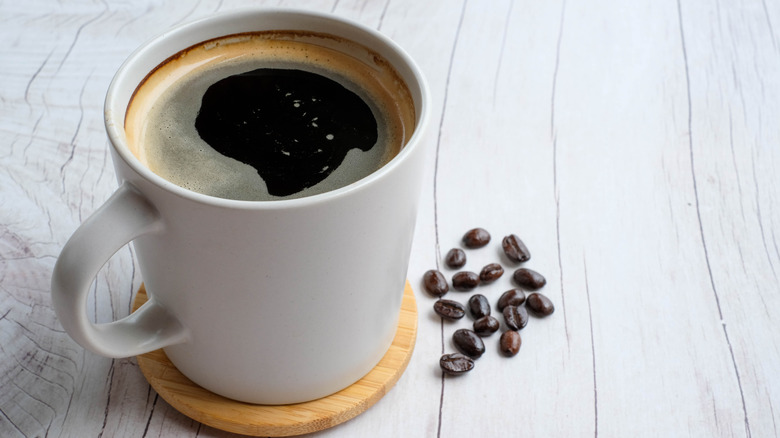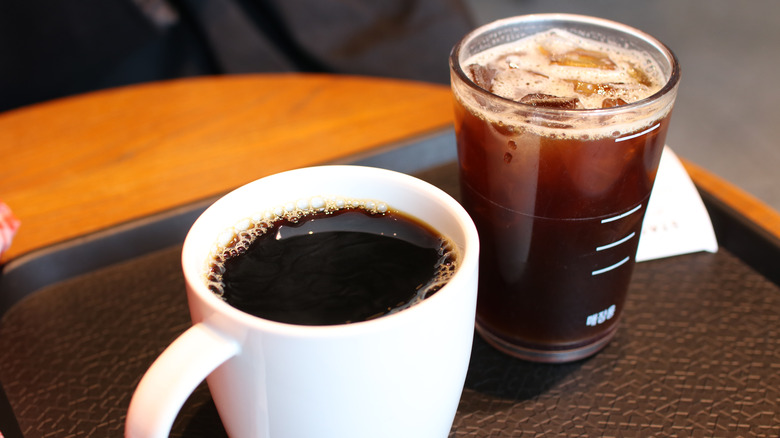How WWII Led To The Creation Of The Americano
For many coffee drinkers, an Americano is no less than pure caffeinated bliss, given that it consists of nothing but espresso and water. Thus, the Americano is the distillation of coffee, with no sugar, syrups, or kinds of milk (dairy or otherwise) to muddy the waters. When someone is seeking a real jolt of energy, it might be one of the single best choices to opt for. Did you know, though, that it is a direct result of wartime ingenuity?
As noted by Americano Lodge, American soldiers stationed in Italy during World War II were unfamiliar with the strong, assertive nature of the local espresso. Instead, they attempted to approximate the taste of American drip-style coffee and watered the espresso down. Thus, an Americano is simply a shot or two of espresso lightened up somewhat with water. This simple trick helped mellow out the sharp intensity of Italian espresso for the American soldiers unacquainted with the sometimes acrid flavor of the unadulterated stuff.
How did the Americano get started?
War History Online notes that the original practice at many Italian coffeehouses and cafes was to serve an American soldier shot of espresso with a glass of hot water on the side. Eventually, baristas realized that they could simply mix the two together to please their foreign customers, and the rest is history. Soon enough, the new concoction spread throughout the continent and eventually made its way back to the US. Given the context, it's no surprise that the original name for the drink was the "café Americano," which was eventually shortened to just Americano.
Of course, you can add sweeteners or creamers to Americanos, if you so choose. However, it's safe to say that most Americano purists drink it black, not unlike the first GIs who downed the beverage. Some also prefer their Americanos iced, though the Americanos enjoyed by WWII soldiers were most certainly hot.
Nowadays, the next time you order or make an Americano, take a moment to remember how the drink made its way from wartime Italy all the way to your local coffee shop.

